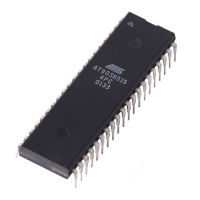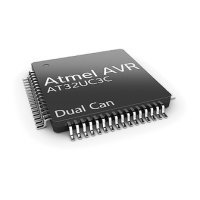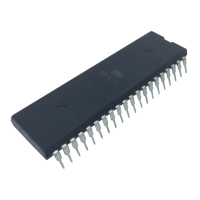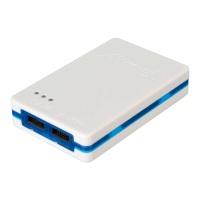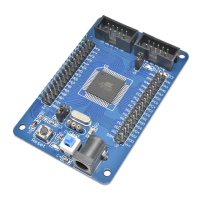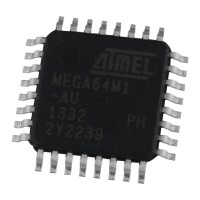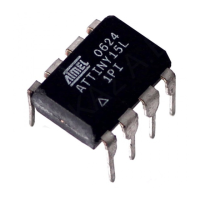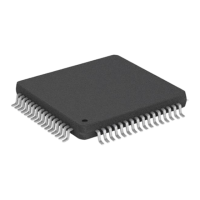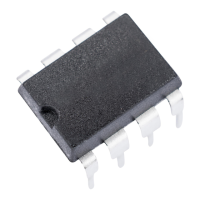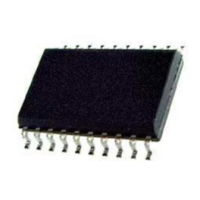Common Features Description
Atmel 8051 Microcontrollers Hardware Manual 2-96
4316B–8051–02/04
2.13.4 Using Timer 1 to
Generate Baud
Rates
When Timer 1 is used as the baud rate generator, the baud rates in Modes 1 and 3 are
determined by the Timer 1 overflow rate and the value of SMOD as follows:
The Timer 1 interrupt should be disabled in this application. The Timer itself can be con-
figured for either “timer” or “counter” operation, and in any of its 3 running modes. In the
most typical applications, it is configured for “timer” operation, in the auto-reload mode
(high nibble of TMOD = 0010B). In that case, the baud rate is given by the formula
One can achieve very low baud rates with Timer 1 by leaving the Timer 1 interrupt
enabled, and configuring the Timer to run as a 16-bit timer (high nibble of TMOD =
0001B), and using the Timer 1 interrupt to do a 16-bit software reload.
Figure 2-21 lists various commonly used baud rates and how they can be obtained from
Timer 1.
Figure 2-21. Timer 1 Generated Commonly Used Baud Rates
2.13.5 Using Timer 2 to
Generate Baud
Rates
Timer 2 is selected as the baud rate generator by setting TCLK and/or RCLK in T2CON
(Table 2-8). Note then the baud rates for transmit and receive can be simultaneously dif-
ferent. Setting RCLK and/or TCLK puts Timer 2 into its baud rate generator mode, as
shown in Figure 2-22.
Fosc (MHz) 11.0592 12 14.7456 16 20 SMOD
Baudrate
150 40h 30h 00h 0
300 A0h 98h 80h 75h 52h 0
600 D0h CCh C0h BBh A9h 0
1200 E8h E6h E0h DEh D5h 0
2400 F4h F3h F0h EFh EAh 0
4800 F3h EFh EFh 1
4800 FAh F8h F5h 0
9600 FDh FCh 0
9600 F5h 1
19200 FDh FCh 1
38400 FEh
76800 FFh
